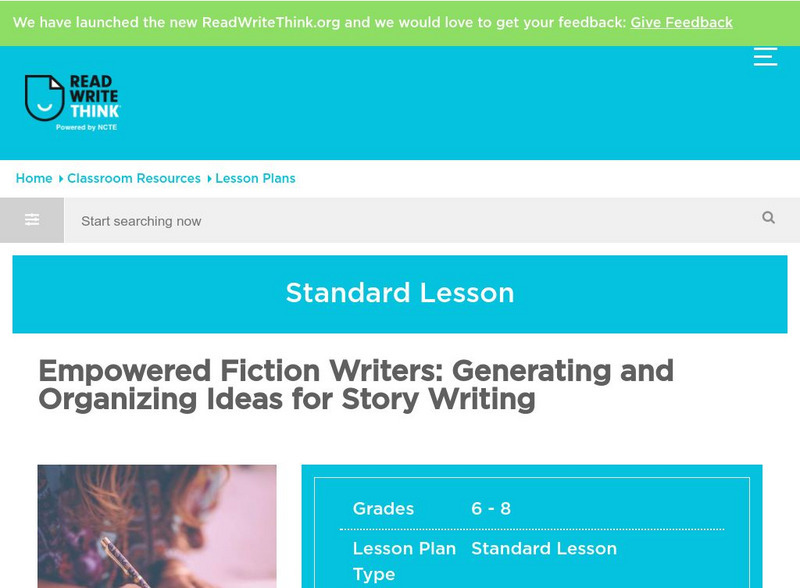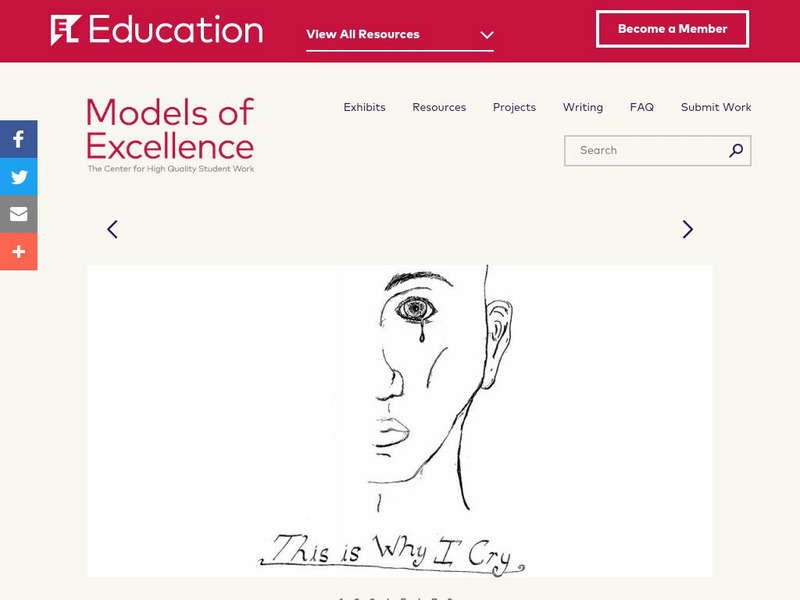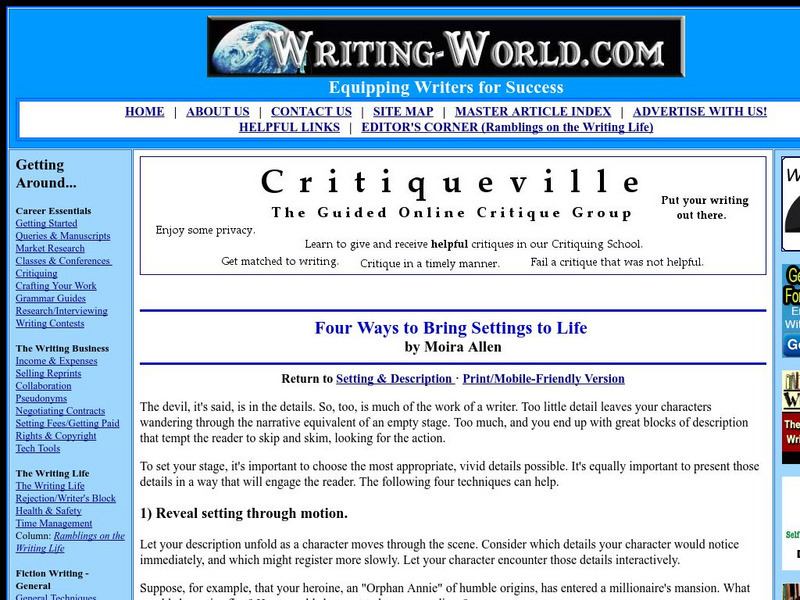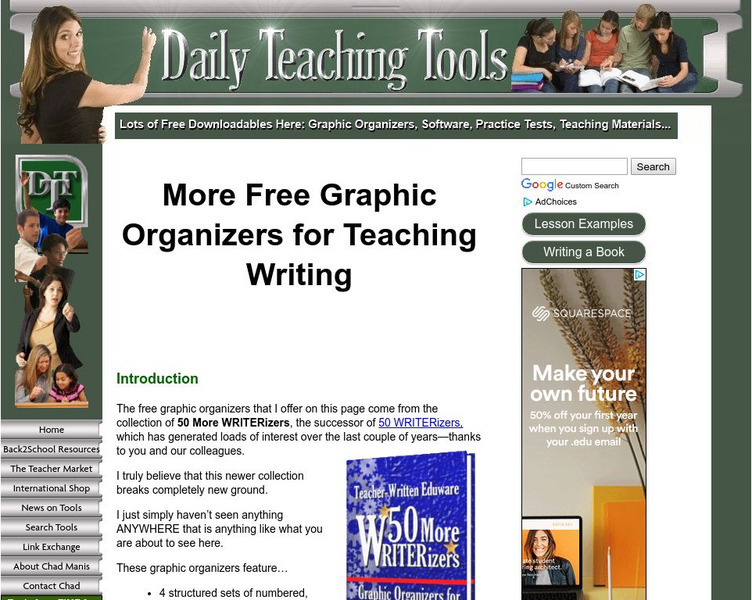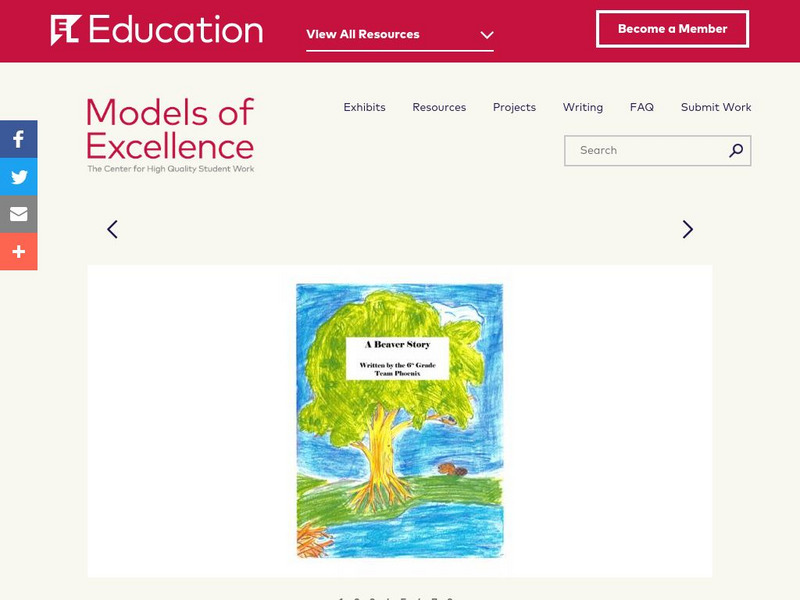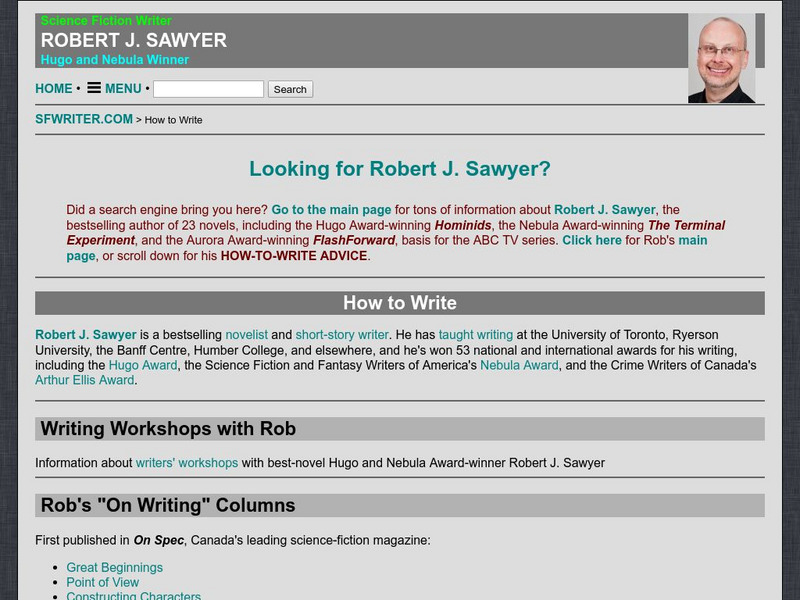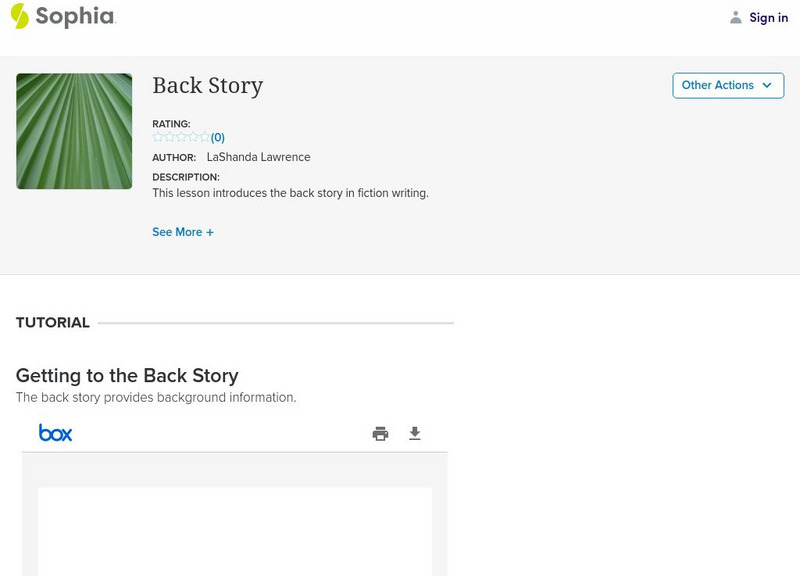Hi, what do you want to do?
Curated OER
Silent Spring
Students read background information about Rachel Carson found on the listed website links. They analyze and answer questions about her work and how it is linked to science then they research pesticide usage and alternative methods.
Curated OER
Journeys
Students write a story using their journey to school as the setting. In groups, they discuss their experiences and browse through books to get ideas for their story. They practice using a thesaurus to find new verbs or adjectives they...
Curated OER
Underground Travelers
Students are introduced to new vocabulary associated with the Underground Railroad. Using primary sources, they evaluate the railroad's impact on society in the past and today. They also make a judgment about the morality of the railroad...
Curated OER
Tasmanian Time Travel
Sixth graders perform research using the Internet about the Tasmanian Devil. The project can be presented in a variety of ways. The use of computer software is important for students to know, specifically Hyperstudio.
Curated OER
The Time Machine - Layered Curriculum Study
Students complete three activities of their choice from a given list surrounding their study of H.G. Wells' novel, The Time Machine. They choose activities from each of the seven learning styles.
Curated OER
I am the Walrus
Students research walruses using the library and the Internet, then write an essay from what they find in their research. In this investigative lesson students view a video on walruses then write an essay after researching.
ReadWriteThink
Read Write Think: Blending Fiction and Nonfiction
Contains plans for four class periods that ask students to blend narrative and expository writing after reading fiction and nonfiction selections. In addition to student objectives and standards, these instructional plans contains links...
ReadWriteThink
Read Write Think: Empowered Fiction Writers: Generating and Organizing Ideas
Do your students' minds go blank when they confront a blank piece of paper? Speedwriting can help them get started with writing as well as come up with topics to write about. They can then incorporate their key ideas and phrases into a...
Other
Fiction Writing Tips: Creating a Vivid Setting
Some excellent guidelines to consider when evaluating your setting in a short story or novel. Discusses the importance of setting, some examples, as well as practical advice in setting your story. W.11-12.3d Sensory/precise lang narratives
Online Writing Lab at Purdue University
Purdue University Owl: Fiction Writing Basics
This resource discusses some terms and techniques that are useful to the beginning and intermediate fiction writer, and to instructors who are teaching fiction at these levels. W.11-12.3a Narratives
Read Works
Read Works: Alyssa Wears a Bow Tie
[Free Registration/Login Required] This passage is a fictional narrative about a girl who chooses to show her creativity by wearing a bow tie on the first day of school. This passage is a stand-alone curricular piece that reinforces...
Other
Re:fiction: Making Ends Meet: How to Write a Good Ending to a Story
This article from Re:Fiction magazine offers tips on different ways to end a piece of narrative writing.
EL Education
El Education: This Is Why I Cry
Students gain a deeper understanding of slavery by creating an accurate portrayal of a character from history. Each historical character file they create contains a portrait, a biographical narrative, a character map, a bibliography, and...
Other
The Lancaster Grid for Learning: Narrative Poem: The Highwayman
A complete text of the narrative poem "The Highwayman" by Alfred Noyes.
Other
Writing World: Four Ways to Bring Settings to Life
A great resource outlining four major ways to make settings appear more real and genuine in fiction. Deals with themes such as motion, experience, mood, and the senses. W.11-12.3d Sensory/precise lang narratives
Other
Elements of Fiction
Simple discussion of the elements of fiction with a specific section devoted to Freytag's Pyramid (aka "basic plot structure"). A good place to start for gathering information on the structure of narrative.
Read Works
Read Works: A Trip to the Store
[Free Registration/Login Required] This fictional narrative shares the story of a shopping trip and the theme "wants versus needs" in life. This passage is a stand-alone curricular piece that reinforces essential reading skills and...
TED Talks
Ted: Ted Ed: How to Write Descriptively
The point of fiction is to cast a spell, a momentary illusion that you are living in the world of the story. But how do writers suck readers into stories in this way? Nalo Hopkinson shares some tips for how to use language to make your...
Daily Teaching Tools
Daily Teaching Tools: Graphic Organizers for Teaching Writing
This Daily Teaching Tools collection provides graphic organizers for writing. Elaborate graphic organizers for the following areas are provided: persuasive essays, expository essays, paragraph writing, fiction pieces, narrative writing,...
Ohio University
Ohio.edu: Point of View and Narrative Voice
This is an article defining point of view, explaining the types of point of view, and discussing voice and tone. It was originally published at http://teenwriting.about.com/library/weekly/aa111102e.htm.
EL Education
El Education: A Beaver Story
This children's book about beavers was written and illustrated by 6th graders after extensive field research with experts in the field. The book is unique in that it offers a continuous fictional narrative at the top of each page, an...
Other
Robert J. Sawyer: Writing Workshops
This site features a list of columns written by Robert Sawyer. They include: Great Beginnings, Point of View, Constructing Characters, Show, Don't Tell, Description, Research, and more. W.9-10.3, 3a, 3b, 3c, 3e Narratives, W.11-12.3, 3a,...
Sophia Learning
Sophia: Back Story
This lesson introduces the back story in fiction writing. W.11-12.3c Narrative Org
Harvard University
The Harvard Chaucer Page: English Romance
A survey of Geoffrey Chaucer's work, which was much influenced by romance, the dominant mode of secular fictional narrative in his time.
Other popular searches
- Fictional Narrative Writing
- Fictional Narrative Prompts
- Fictional Narrative Rubric
- Fictional Narrative Prewrite
- Fictional Narrative Essay
- Personal Fictional Narrative
- Fictional Narrative Rewrite
- Writing Fictional Narratives
- Borax Fictional Narratives












